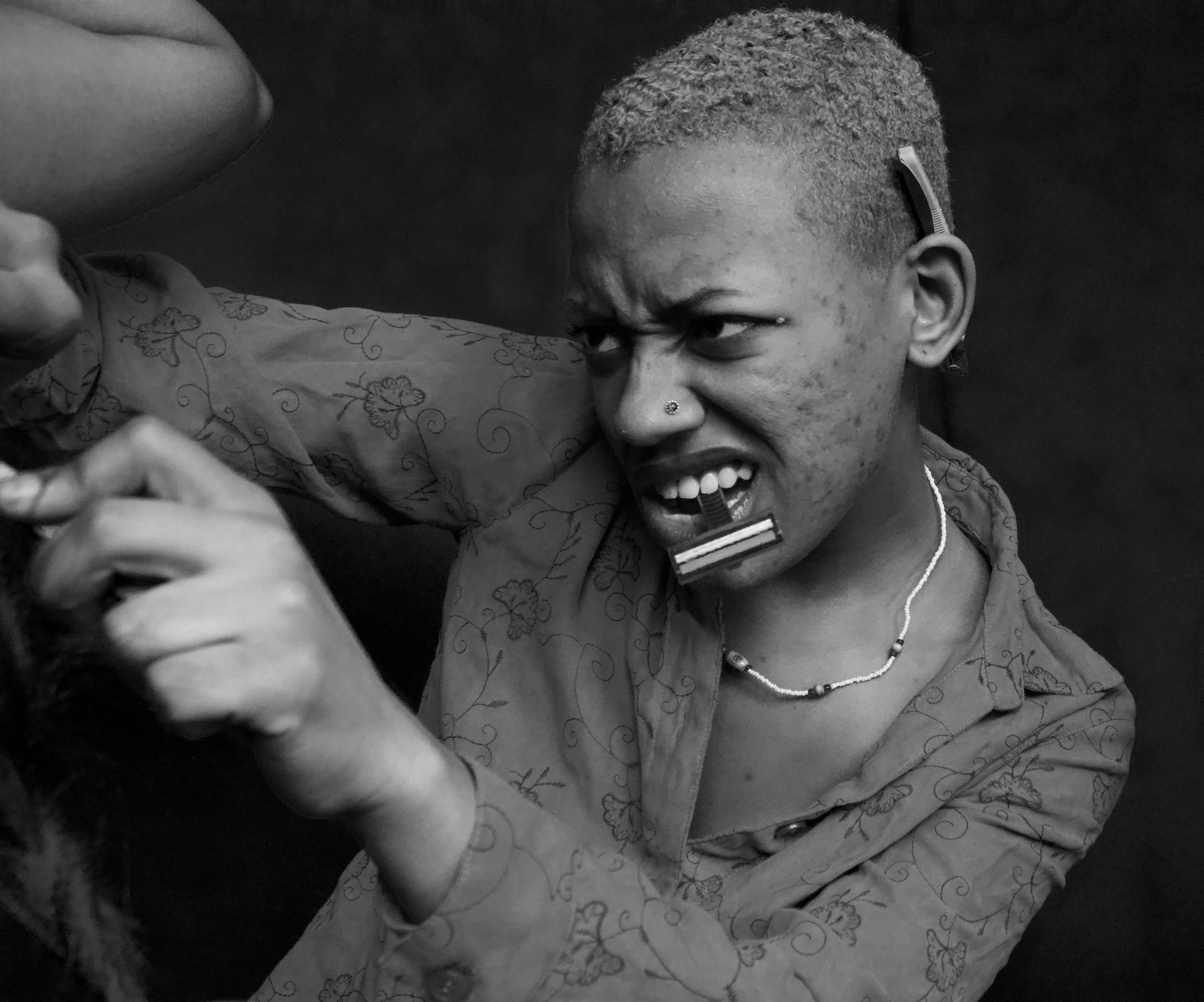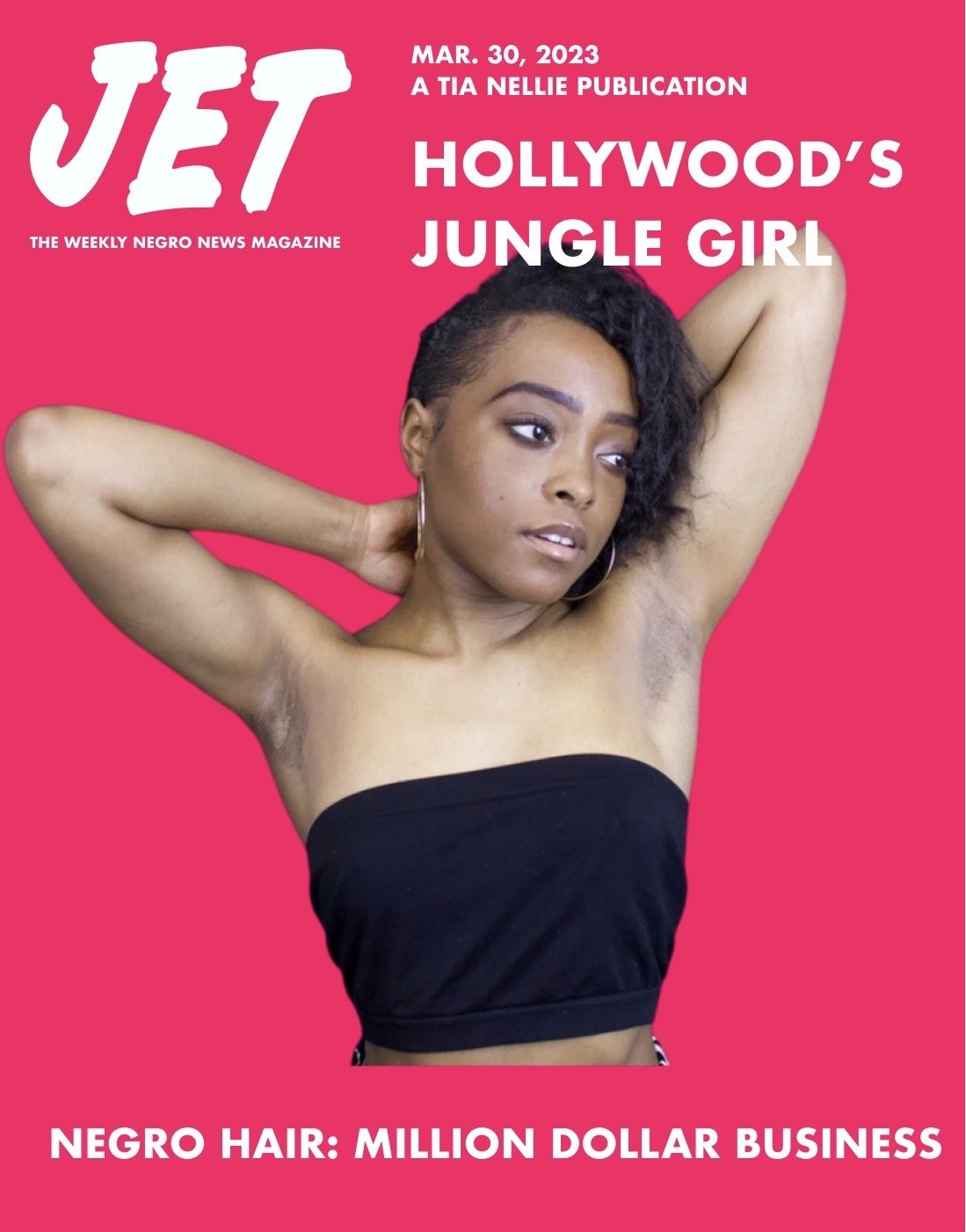STIGMATIZATION OF WOMEN'S BODY HAIR
Models left to right: Desney Johnson, Jediah Greene, and Folasade Alvarez-Gibson.
A young girl around 10 years old is writing in her composition book as the teacher instructed. While she is in the midst of her writing a young boy calls out loudly, “Nellie has gorilla arms.” The class laughs and students start to gather. Another student exclaims, “You have more hair than me…and I'm a boy!” “Can I braid it!?” Someone yells. Can girls not have arm hair? Nellie thinks to herself. From that day forward, young Nellie wore a sky blue, long sleeve jacket everyday until she entered middle school and everyone had forgotten about the incident. You may have guessed this, but young Nellie was me.
This moment followed me through my adulthood and affected the way I defined femininity. According to the Merriam Dictionary femininity is described as: “the quality or nature of the female sex : the quality, state, or degree of being feminine or womanly.” Why does embracing one's natural genetics make them less womanly? A lot of people, including myself, have been trained to hate themselves for things they can't change due to society's input. This can cause insecurity for the young and wise. For this reason I wanted to do a photography project about the stigmatization of body hair on women.
Behind the scenes
“Fighting”
“Gleeming”
Before doing an entire project on it and concepting the shoot, I had to learn about the history of women and shaving. Let me share a quick history lesson. I promise it won't be boring. Did you know the only reason shaving became what it is today is because the fashion, makeup, and razor industry wanted more money? According to the Smithsonian, “In the 1920s, the new fashion for sleeveless tops and short dresses meant that the legs and armpits of American women were now visible in social situations, and advertisers seized the opportunity to encourage women to shave their legs and their armpits.” Shaving has been a practice since the early 1900s but wasn't popularized until the 1960s. The fashion industry was creating more revealing clothing to show off legs and arms; the makeup world created new trends that encouraged skin to be like porcelain and the razor industry used all of this to their advantage.
I have always wondered why older women would tell me not to shave my legs. Based on my research I found that during this time when shaving was most popular, the trend didn't really apply to black women. Black people were wearing revealing clothing during the 1960s and ‘70s. Most didn't resonate with the marketing of “porcelain” since that typically refers to white or lighter toned skin. As a result, most saw the trend of shaving as a European practice.
For this project I will be using photography and design based on ‘70s style and fashion. I will be using Jet and Ebony magazines as design inspiration and recreating looks from the ‘70s. When describing the shoot to the models, I told them they would also be actors because each character goes through their own journey. I thought of this shoot almost like a short film because each model starts one way and ends another. I chose the ‘70s because that was a time when black was being branded as beautiful. In 1968, influential writer and activist Hoyt Fuller said, “Across this country, young black men and women have been infected with a fever of affirmation. They are saying, "We are black and beautiful.” I think this mentality could be adapted to body hair. Hair is beautiful and does not take away from one's womanhood.
Jet magazine cover from 1952
Updated version of the 1952 Jet magazine cover
Follow @tianellmedia to see the final project published later this spring.
MEET THE AUTHOR
Tia Thomas is an aspiring actress and alumni of Baltimore School for the Arts. She is currently attending Towson University as an acting major. She hopes that the work she creates in theatre will impact peoples lives along with inspiring them.







